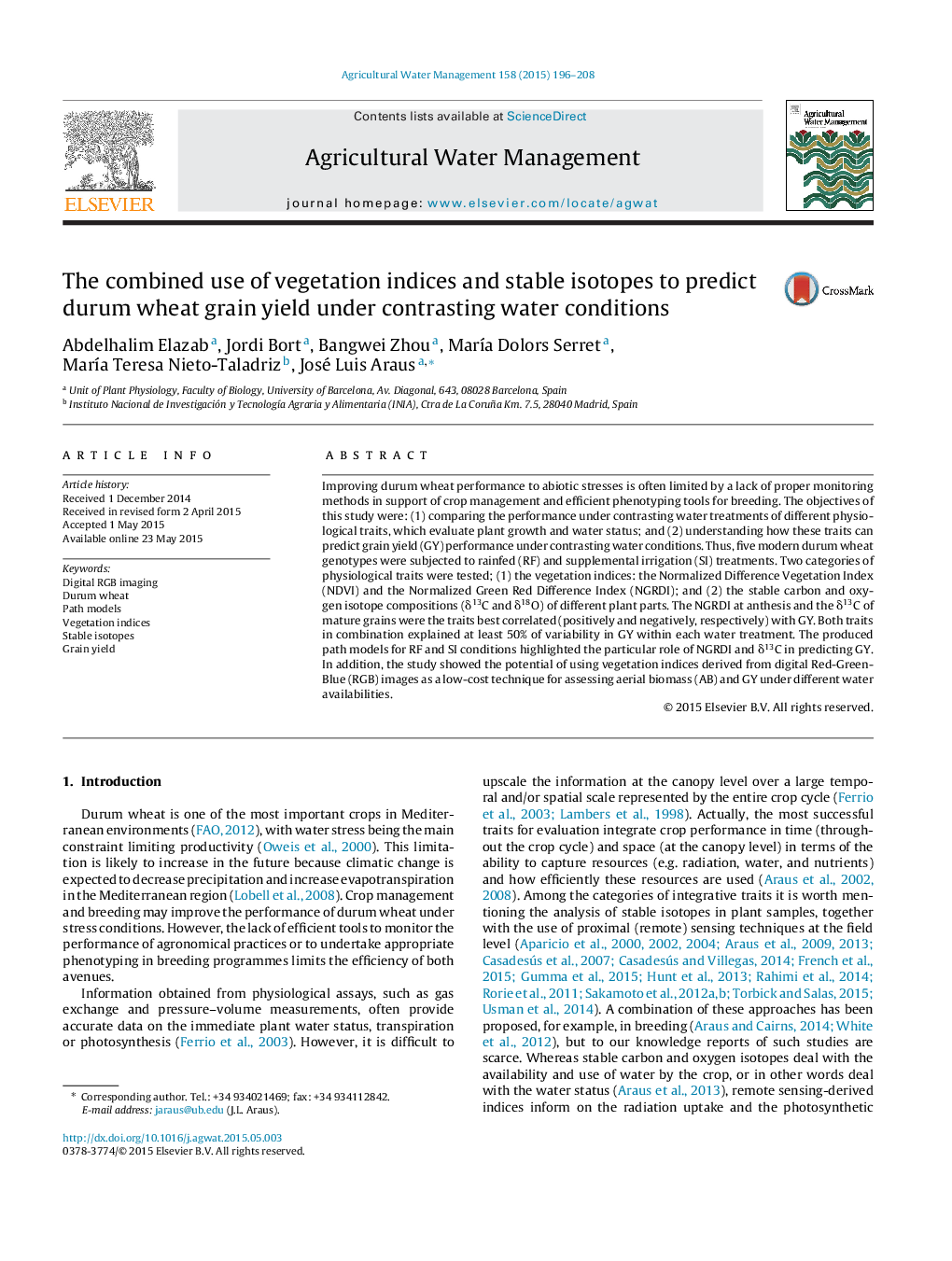| Article ID | Journal | Published Year | Pages | File Type |
|---|---|---|---|---|
| 4478435 | Agricultural Water Management | 2015 | 13 Pages |
•The combined use of carbon isotope composition and vegetation adequately predicts biomass and yield in durum wheat.•NGRDI is more efficient than NDVI in assessing biomass and grain yield.•Low-cost digital RGB imaging can assess the effect of water stress in durum wheat.
Improving durum wheat performance to abiotic stresses is often limited by a lack of proper monitoring methods in support of crop management and efficient phenotyping tools for breeding. The objectives of this study were: (1) comparing the performance under contrasting water treatments of different physiological traits, which evaluate plant growth and water status; and (2) understanding how these traits can predict grain yield (GY) performance under contrasting water conditions. Thus, five modern durum wheat genotypes were subjected to rainfed (RF) and supplemental irrigation (SI) treatments. Two categories of physiological traits were tested; (1) the vegetation indices: the Normalized Difference Vegetation Index (NDVI) and the Normalized Green Red Difference Index (NGRDI); and (2) the stable carbon and oxygen isotope compositions (δ13C and δ18O) of different plant parts. The NGRDI at anthesis and the δ13C of mature grains were the traits best correlated (positively and negatively, respectively) with GY. Both traits in combination explained at least 50% of variability in GY within each water treatment. The produced path models for RF and SI conditions highlighted the particular role of NGRDI and δ13C in predicting GY. In addition, the study showed the potential of using vegetation indices derived from digital Red-Green-Blue (RGB) images as a low-cost technique for assessing aerial biomass (AB) and GY under different water availabilities.
